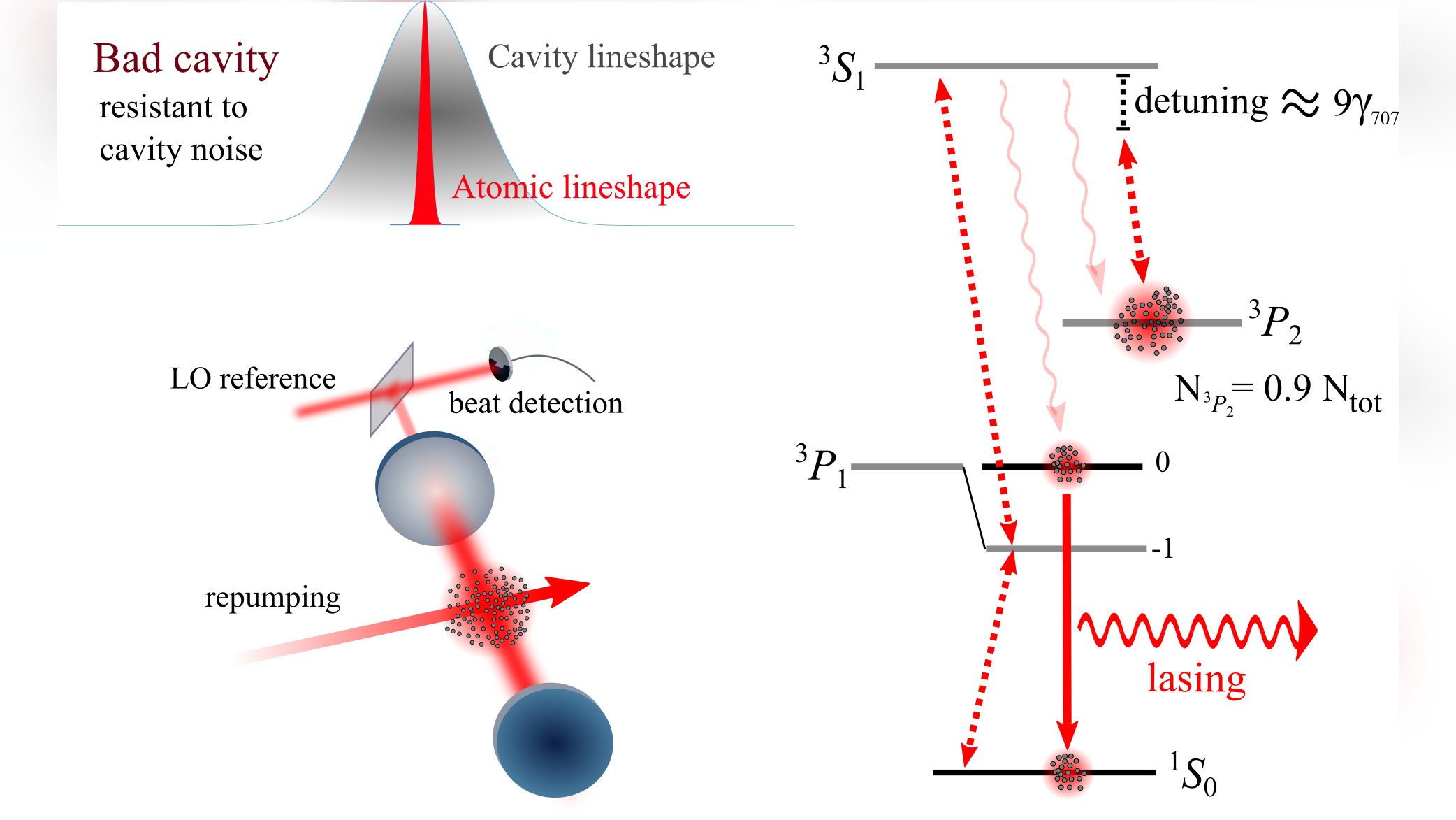The record precision achieved by optical atomic clocks have applications within metrology [1-3] and the probing of fundamental physics [4-5]. A challenge for the optical atomic clock is the low duty cycle of the atomic interrogation, which is usually bridged by stabilizing the interrogation laser to a separate reference cavity. Such atomic clocks are unsuited for space borne applications as they are bulky and prone to environmental noise. However, these limitations can be overcome with an active superradiant lasing scheme [6-7]. Such a system delivers a continuous frequency reference with greatly suppressed cavity noise [8,9] without needing a separate ultrastable reference cavity.
In a recent publication [10] we demonstrate a superradiant lasing scheme that can produce ms long steady state superradiant lasing with a Fourier limited linewidth almost an order of magnitude below the natural linewidth of the lasing transition. The theoretically achievable performance is limited only by the rate of spontaneously emitted photons from a single atom into the cavity mode, and testing the prediction of this noise limit would contribute significantly to the advancement of such laser systems.
The steady-state operation of a quasi-continuous superradiant laser can be achieved by judicious choice of repumping rates of the intermediary metastable states. We will upgrade our apparatus to extend the lasing operation beyond the regime of Fourier limited spectral linewidth and implement new ways of manipulating the atoms while retaining lasing coherence.

